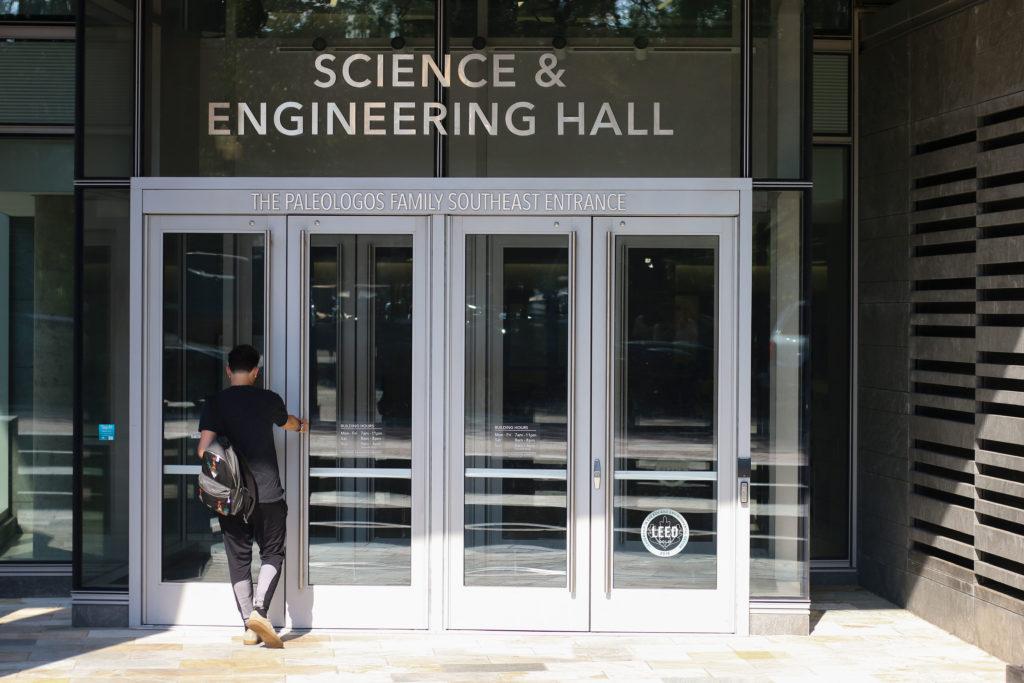A professor in the School of Engineering and Applied Science received a $250,000 grant from the Environmental Protection Agency last month to shortcut denitrification processes in wastewater, necessary to remove harmful algae growth in the water.
The EPA Science to Achieve Results grant totals almost $1 million and is split between several different institutions to fund the three-year research project, a SEAS newsletter from late last month states. Rumana Riffat, the associate dean for academic affairs in SEAS and the lead investigator on the project, said the process will focus on finding mechanisms to denitrify wastewater in the Chesapeake Bay area while cutting the chemical and financial costs required to complete the process.
Riffat said she and her team applied for the grant from the EPA last summer and went through several rounds of questioning before ultimately receiving the grant. She said the Water Research Foundation is the lead organization on the project.
“It was very recently that we received the green light that we had received the award, which was of course very exciting for all of us,” Riffat said.
Nitrogen and phosphorus can cause algal blooms in wastewater, which release toxins that can sicken or kill animals and people and can hurt surrounding businesses that rely on a certain water source, according to the EPA’s website.
She said the researchers will conduct their work using a combination of lab space in the Science and Engineering Hall and in D.C. Water’s facilities. Riffat said the anammox bacteria can provide a “short cut” route to convert ammonia to nitrogen gas, removing the nitrogen from the water.
She said nitrogen removal typically involves costly equipment and using anammox will reduce the necessary resources to denitrify the water.
“Of course the goal is if we can reduce the amount of energy that’s required,” Riffat said. “If you can reduce the amount of chemicals that are required in the removal, then that’s significant savings for the plant and for the community as a whole.”
Stephanie Fevig, the research program manager at the Water Research Foundation, said the foundation works with water utilities and organizations throughout North America and is working with D.C. Water and the Hampton Roads Sanitation District on the project. She said using anammox has been successful in nitrogen removal processes on small side streams and this project is focused on translating that to a larger scale.
“We’re really scaling up what’s been successful on a smaller scale,” she said.
Christine deBarbadillo, the director of clean water and technology at D.C. Water, said the agency is involved with an ongoing partnership with GW to find solutions and upgrades to existing wastewater technology.
She said the de-nitrification method the research team is examining involves using anammox to convert ammonia and nitrite in the water to nitrogen gas.
“We are using a different pathway into the nitrogen cycle to more efficiently remove nitrogen and save energy and chemical costs,” deBarbadilo said.
Experts in environmental studies and chemistry said the nitrogen removal process in water can be costly and energy-intensive, creating a need for enhanced research in the area.
George Wells, an associate professor of civil and environmental engineering at Northwestern University, said excess nitrogen in water can cause a “wide range” of “detrimental” effects, like rapid growths of algae that lead to “massive” degradation of aquatic ecosystems, toxicity to aquatic life and emission of the greenhouse gas nitrous oxide.
Wells said this type of research involves a combination of developing a process, lab testing, research into the microorganisms in the location of the study and underlying mechanisms that aid in the research.
“Conventional nitrogen and phosphorus removal technologies are extremely energy intensive and costly,” he said in an email. “Addressing these deficiencies through new understanding of the microbial world is a key need that is addressed by this project.”
Gary Vanloon, a professor of chemistry and environmental studies at the University of Queens in Ontario, Canada, said wastewater treatment plants will typically focus on removing phosphorus first and will remove nitrogen as a second step.
He said research projects in this area typically involve conducting small-scale experiments in a lab, moving experiments to a larger scale pilot and then conducting trials full scale in wastewater treatment plants.
“It’s kind of a three-step process,” he said. “A pilot plant process and then trials in an actual wastewater plant.”








